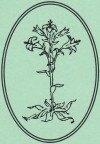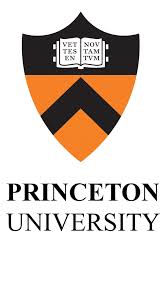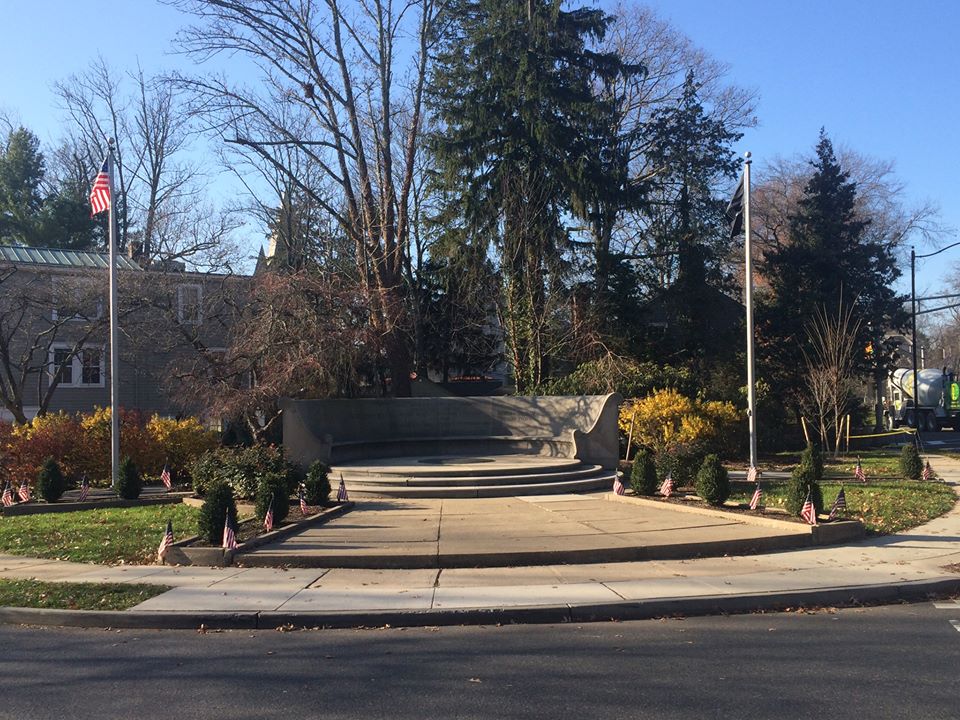Fulfilling their pledges, the Garden Club of Princeton, the Princeton chapter of the Daughters of the American Revolution and Princeton University have contributed nearly $30,000 toward the restoration costs of Princeton’s All Wars Memorial.
Mayor Liz Lempert accepted a check for $29,200 from Robin Gosnell, president of the Garden Club of Princeton, and Rosemary Kelly, the vice regent of the Princeton chapter of the Daughters of the American Revolution. The check included Princeton University’s $5,000 contribution.
“This is a great example of community institutions working together to help the town achieve an important result,” Mayor Lempert said. “We are delighted to be able to assure the future integrity of this well-loved monument at one of the gateways to Princeton.”.
The Princeton Council awarded a $36,200 contract to Masonry Preservation Group in August to clean up and restore the limestone bench at the intersection of Nassau and Mercer streets. The town will make up the difference between the cost of the contract and the contribution it has received toward the project.
The All Wars Memorial’s curved Indiana limestone bench is discolored from nearly 100 years of sun and rain and snow, and the circular bronze medallion is tarnished and pitted. The plan is to restore it in time for the Nov. 11 Veterans Day ceremony.

Daughters of the American Revolution. http://www.princetondar.org
The Princeton chapter of the Daughters of the American Revolution expressed interest in restoring the limestone bench and bronze medallion. Its members paired with the Garden Club of Princeton – which planted and maintains the landscaping surrounding the park – to take on the project, said Kelly.

The Garden Club of Princeton has been involved with the All Wars Memorial since its inception, Gosnell said. The club helped to raise money to build the memorial, which was proposed after World War I. It was completed and dedicated in 1925.
The All Wars Memorial was intended to honor the men and women who participated in World War I, Kelly said. It is an acknowledgment of the role that women played in World War I, as well as their sacrifices.
The inscription on the bench reads, “Hold dear our sons and daughters who gave their lives in the world war for freedom.”
It is unique in that no comparable war memorial in New Jersey is in the form of a bench, nor does any other war memorial in New Jersey have a medallion that says, “Patriotism, Gallantry, Devotion,” Kelly said. The medallion says, “World War I 1914-1918.”
Since World War I, the names of additional military conflicts have been carved into the backrest of the bench – from World War II to the Korean and Vietnam wars, and Operations Desert Storm, Enduring Freedom and Iraqi Freedom.
The memorial was proposed in 1918 by a committee of prominent Princeton residents as “a common expression of admiration and gratitude toward those who died in a great cause,” according to www.ww1project.org, which has compiled a list of World War I memorials and monuments in the United States and in U.S. territories.

The major contributors to the All Wars Memorial included Allan Marquand, curator of the Princeton University Art Museum; Bayard Stockton, a descendant of Richard Stockton, who signed the Declaration of Independence; and Gerard Lambert of the former Warner-Lambert Pharmaceutical Co.
Also among the major contributors were philanthropist Mrs. Moses Taylor Pyne, and Mrs. Thomas J. Preston, the widow of former U.S. President Grover Cleveland, who lived in Princeton after leaving the White House.

